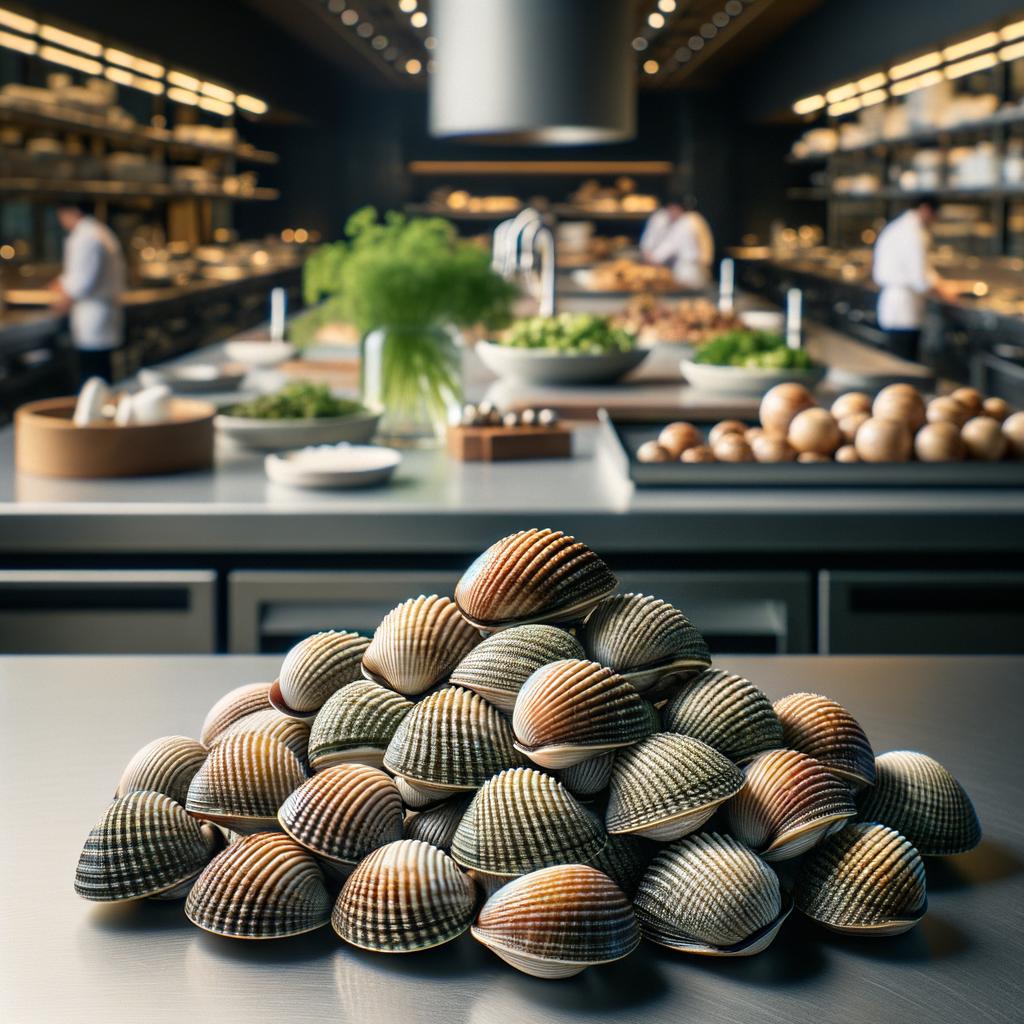Littleneck Clams

Description Littleneck clams, scientifically known as Mercenaria mercenaria, are a delightful treat from the ocean's bounty. They are the smallest of the hard-shell clams, with a diameter of no more than 2 inches. They have a round, hard shell with a color palette ranging from gray to white, often with beautiful streaks of blue or purple. The interior is a lustrous silver, housing a succulent, sweet flesh. Their flavor profile is a balance of briny saltiness and subtle sweetness, with a texture that's tender yet slightly chewy - a true testament to their marine heritage. What sets littleneck clams apart from their larger counterparts is their tender meat and sweeter taste, making them a favorite amongst seafood connoisseurs.
Primary Uses Littleneck clams are incredibly versatile in the culinary world. They are commonly steamed open and served with a simple dressing of melted butter, garlic, and lemon. In Italian cuisine, they are the star ingredient in "spaghetti alle vongole," a pasta dish with garlic, olive oil, and a splash of white wine. In New England, they are a key component in clam chowder, lending their unique flavor to this creamy, hearty soup. Beyond their culinary uses, littleneck clams also play a role in water purification as they filter feed, thus contributing to a healthier marine ecosystem.
History The history of littleneck clams is as rich as their flavor. Native Americans were the first to harvest these clams, using them as a food source and even as a form of currency known as "wampum." Early European settlers soon adopted this practice, and clams became a staple in their diet. Over time, the popularity of littleneck clams has soared, with the clamming industry becoming a significant part of the economy in coastal regions. There are tales of "clam gold rushes" where towns have been built around successful clam beds, showing how these small creatures have made a big impact.
Nutritional Information Littleneck clams are not just tasty but are also packed with nutritional benefits. They are a rich source of lean protein, with a 3-ounce serving providing about 22 grams. They are also loaded with essential minerals like iron, zinc, selenium, and are particularly high in Vitamin B12, crucial for nerve function and the production of DNA. Compared to other shellfish, littleneck clams have a lower fat content, making them a healthier choice for those watching their diet. However, they are high in sodium, so they should be consumed in moderation by individuals with high blood pressure. All in all, the littleneck clam is a small package with a big nutritional punch.

